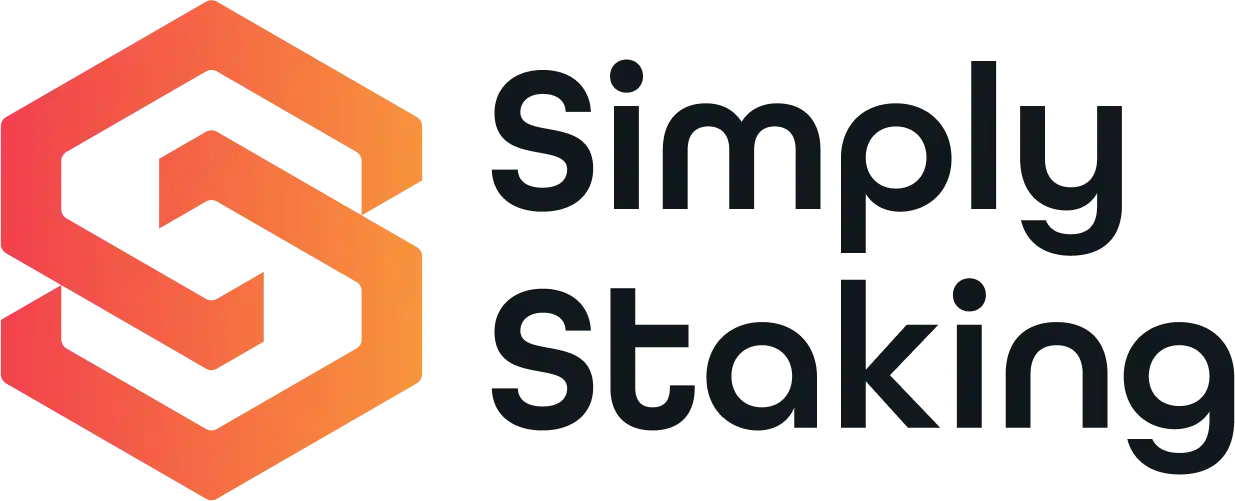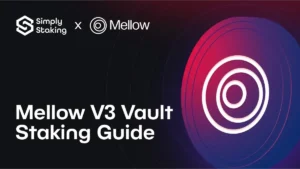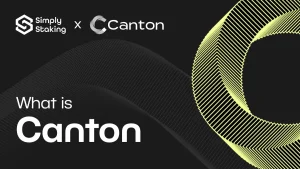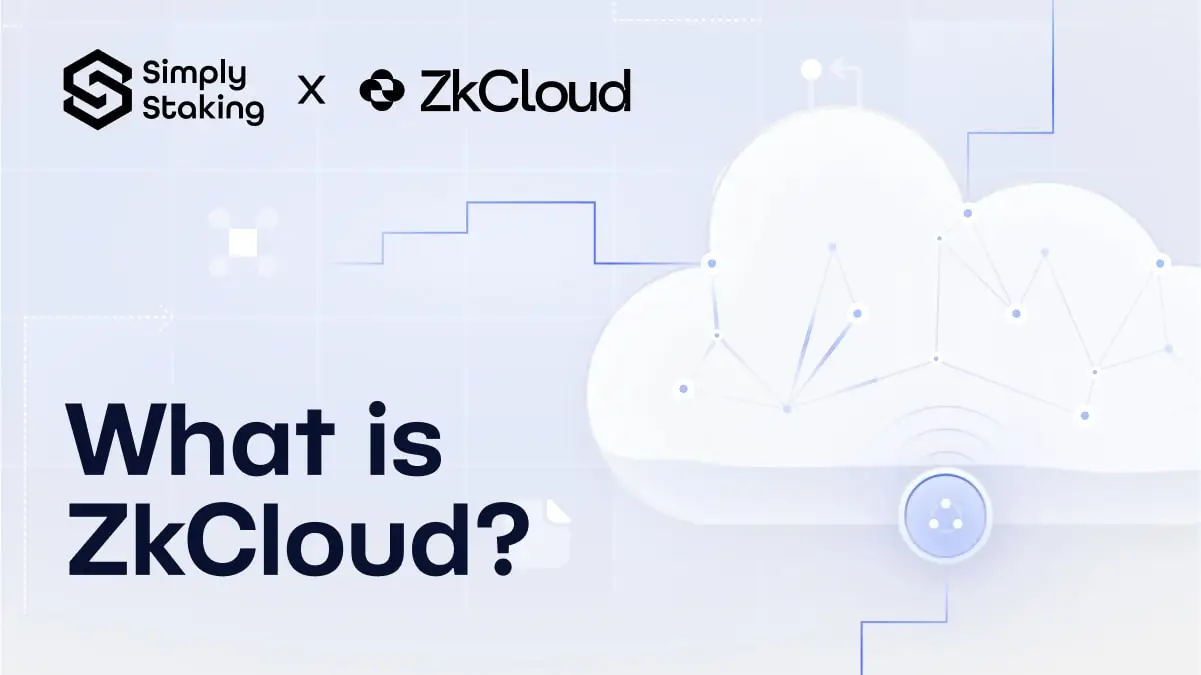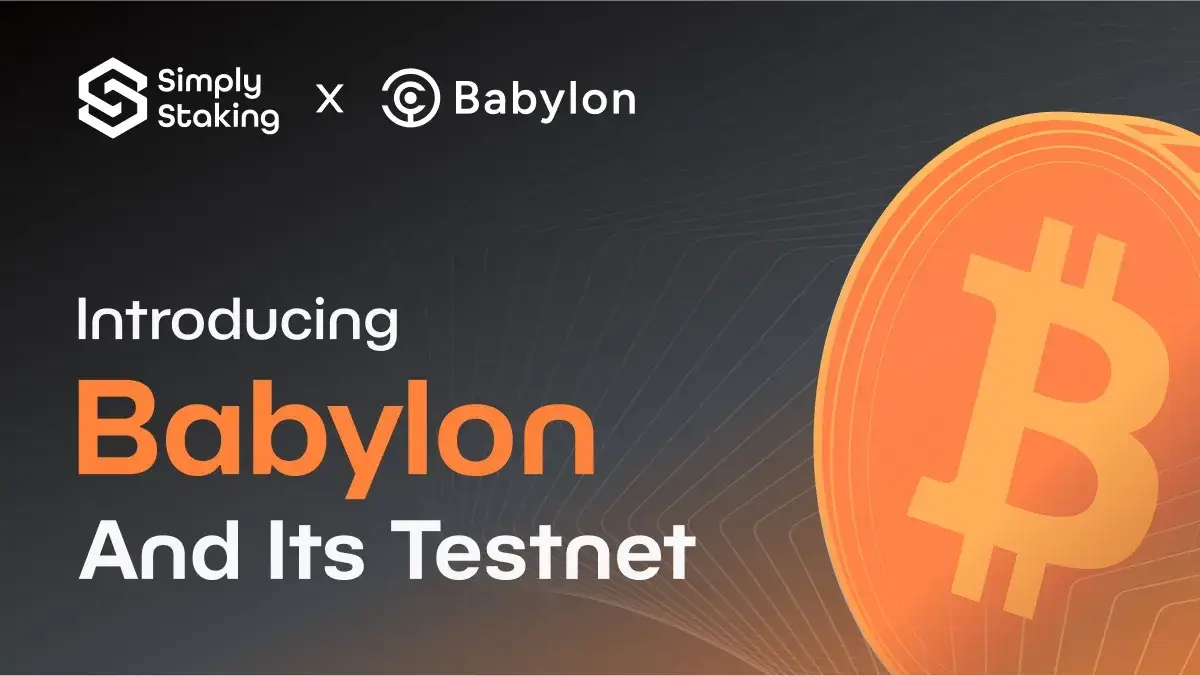The Cosmos Hub has earned the name “Internet of Blockchains” throughout the years. The initial aim of the Hub was to address some of the most pressing issues faced by blockchain networks, such as scalability, interoperability, and usability.
This report delves into the intricate architecture, consensus mechanisms, governance models, and the pivotal role of the $ATOM token within the Cosmos ecosystem. Additionally, it explores innovative features like Interchain Security and the contributions of entities like the ATOM Accelerator DAO (AADAO) to the ecosystem’s growth.
You might be interested in these articles:
- Cosmos Hub Staking Guide: How to Stake ATOM
- Cosmos Hub: From Replicated to Partial Set Security
- DROP Liquid Staking
- Cosmos Hub Staking APR
Brief History of the Cosmos Hub
Cosmos was conceived to make blockchain technology less siloed and more interconnected. The vision was to create an ecosystem of blockchains that could communicate with each other in a decentralized way, solving the interoperability issue that many saw as a major hurdle to blockchain’s broader adoption and utility.
The foundational ideas of Cosmos were laid out in the Cosmos Whitepaper, which was published in 2016 by Jae Kwon and Ethan Buchman. The whitepaper detailed the technical and philosophical framework of the Cosmos Network, including the consensus mechanism (Tendermint BFT), the Inter-Blockchain Communication (IBC) protocol for interoperability, and the vision for a scalable and interconnected blockchain ecosystem.
Cosmos was conceived with several key motivations:
- Interoperability: Communication between blockchains was often hard to come across so one of the goals that the Cosmos Hub aimed to solve was the ‘silo’ that most blockchains operated in. The Hub aimed to unlock more utility and potential from this by facilitating communication and data sharing among connected blockchains.
- Scalability: Addressing the scalability challenges of earlier blockchains, such as Bitcoin and Ethereum, Cosmos achieved this by implementing a network of interconnected parallel blockchains with individual validators and governance.
- Usability: The creation of the Cosmos SDK aimed to simplify blockchain application development, reducing entry barriers for developers and fostering innovation within the ecosystem.
- Sovereignty: Cosmos allows independent blockchains to maintain their governance models and token economics, while still operating autonomously and benefiting from the security and interoperability offered by the Cosmos Hub, empowering communities to tailor solutions to their specific needs.
How the Cosmos Hub enables Interoperability
The Tendermint consensus engine (a fork of it called CometBFT is now used) and the IBC protocol are the main drivers that facilitate zone interoperability within the Cosmos Ecosystem (including the Cosmos Hub which is seen as the main router of interchain traffic).
Tendermint Core Consensus
At the heart of the Cosmos Hub’s security mechanism is the Tendermint Core consensus engine, a Byzantine Fault Tolerant (BFT) protocol designed to facilitate high-speed transaction processing and secure validator operations.
Key Features such as Instant Finality, Accountability (easy identification of malicious actors), and Robustness (1/3 of validators could be down or malicious without compromising network integrity) provide the necessary security that many chains require.
Inter-Blockchain Communication Protocol
The focus should be on the Inter-Blockchain Communication Protocol (IBC) which has emerged as one of the most important parts of the Cosmos stack. The Protocol enables secure and standardized communication between all IBC-enabled zones within the Interchain (and even beyond with the use of a light-client) allowing for the easy transfer of assets and data. What is key to note here is that IBC is not a bridge but just a messaging protocol (similarities can be drawn with the XCM on Polkadot).
The Application Chain Thesis
The “application chain thesis” or “app-chain thesis” states that dedicated blockchains for specific applications or use cases (app-chains) offer superior performance, flexibility, and user experience compared to multi-purpose blockchains.
This thesis has been at the forefront since the inception of the Cosmos Ecosystem, fostering and encouraging the development of these specialized chains to address a specific need. Examples of this are evident within the ecosystem, for example, Osmosis is an app-chain whose main purpose is to promote DeFi. Another example is Stride, whose main purpose is to be a Liquid-Staking provider for the Ecosystem.
The Application Chain Thesis offers a few advantages such as:
- Ease of Customization. Developers can tailor blockchain features to the specific requirements of their applications, optimizing performance and functionality rather than being constricted to the needs of the chain they’re building on. App-Chains in the context of the Cosmos ecosystem remain sovereign and have full flexibility.
- Efficiency: Dedicated chains reduce congestion and competition for resources, leading to improved transaction speeds and lower costs. This is evident when compared to ecosystems such as Ethereum where gas always comes at a large cost.
- Innovation: The application chain model allows developers to experiment with novel consensus mechanisms, governance models, and token economics.
Cosmos Ecosystem Overview
The Cosmos ecosystem is a sprawling network of over 50 interconnected blockchains built using the Cosmos SDK (and constantly growing). The common codebase from the SDK provides foundational functionalities like staking and governance across all these chains.
One of the functionalities is the IBC protocol (which was discussed earlier on) which facilitates seamless token swaps and communication across these chains, with the Cosmos Hub at its core.
In 2023 we have seen many new chains launching with the Cosmos SDK at the heart of their code. Names such as Celestia, Dymension, SEI, and even dYdX migrating from Ethereum to Cosmos, are the most notable. This is testament to the work that has been done within the ecosystem and the Hub itself.
The Validator Set of the Cosmos Hub
Validator Set
The majority of Cosmos SDK-based chains employ a Proof-of-Stake (PoS) consensus mechanism. The Cosmos Hub is a PoS chain where the amount of staked ATOM tokens determines the validator set. Validators are responsible for proposing, validating, and committing blocks to the blockchain. The current active set of the Cosmos Hub is set to 180.
In this system, validators compete for stakes to secure a slot within the top 180 to be selected as an active validator. Once in the active set, validators will start to participate within the consensus process and in turn, receive block rewards for their participation.
Once in the active set, a Validator is expected to act in the best interest of the chain and not be a malicious actor. Malicious actors or actors who are not performing as expected (downtime) are subject to penalties such as ‘slashing’ or ‘jailing’. Slashing is a penalty where a portion of that validator’s staked assets are forfeited which is a huge reputational and financial penalty for that validator.
The role of the Token
The ATOM token plays a multifaceted role within the Cosmos ecosystem, facilitating not only network security and governance but also enabling a variety of other critical functions.
Staking and Network Security
ATOM holders have the option to stake their tokens to participate in network security in exchange for rewards for locking up tokens with an unbonding time of 21 Days. Stakers would delegate their tokens to trusted validators who they know will not act maliciously.
Governance
Once ATOM is staked, those ATOMs would then be eligible to participate in Cosmos Governance. It is one of the duties of a delegator to ensure that they maintain a voice when it comes to any proposed changes on the Hub either by voting or even by giving opinions on matters regarding the future direction of the Hub.
Interoperability
While the ATOM token is primarily used within the Cosmos Hub, through IBC and Relaying, the ATOM token can be used as a medium of exchange for paying for transaction fees when interacting with other interconnected blockchains. We see also that other chains are adopting ATOM as an option for TX fees on their platforms. The use of ATOM is also extended to the Consumer Chains (to be discussed shortly).
Interchain Security — Extending the Security of the Hub
Interchain Security allows new or smaller blockchains to benefit from the robust security model of a more established blockchain, like the Cosmos Hub. These chains, also known as Consumer Chains, can “rent” the validator set of a more secure blockchain, these smaller chains can ensure their security without needing to establish and maintain a large set of validators from scratch. This is particularly beneficial in the early stages of a blockchain’s life when attracting a sufficient number of reliable validators can be challenging. This also benefits the Consumer Chain when it comes to reducing their security budget (payout to validators) so their token economics can be more robust initially.
How Interchain Security Works
Interchain Security works by allowing a parent chain (such as the Cosmos Hub) to secure a child chain using its own set of validators. Validators on the parent chain validate transactions and blocks on the child chain (consumer chain), effectively extending their validation services and security guarantees to the child chain. This is achieved without compromising the sovereignty of the child chain; it still maintains its own governance, economics, and other functionalities like all other Cosmos SDK chains.
Key Features and Benefits
- Shared Security: Consumer chains benefit from the established security and validator set of the parent chain, enhancing their resistance to attacks without the need for a large native validator set.
- Sovereignty: Despite sharing security, consumer chains retain their governance and operational independence.
- Scalability: By leveraging the security of established chains, new blockchains can scale more rapidly, focusing on innovation and ecosystem development rather than the initial bootstrapping of validators.
- Ecosystem Growth: Interchain Security facilitates the growth of the Cosmos ecosystem by lowering the barriers to entry for new blockchains, encouraging diversity and innovation within the network.
Recent Developments & Updates
Liquid Staking
In 2023, the Cosmos Hub introduced the Liquid Staking Module (LSM) which is a significant upgrade when it comes to Liquid Staking. The LSM enabled ATOM holders to bypass the 21-day unbonding period when unstaking their tokens. The LSM enhanced the ATOM Economic Zone (AEZ) and helped facilitate the integration and use of already staked ATOM into Cosmos DeFi without compromising yield from staking (and unstaking).
The upgrade unlocked roughly $400M worth of ATOM to be used for DeFi purposes (The cap of the LSM for security purposes is 25% of all ATOM Staked).
Stride, the largest Liquid Staking provider on the Cosmos Hub benefited greatly from this upgrade. Stride holds the majority of the market share across the majority of assets in the Cosmos Ecosystem including ATOM, TIA, OSMO, and more. This can be attributed to the close alignment with the ATOM Economic Zone and most other chains within the Cosmos Ecosystem.
Partial Set Security
Partial Set Security (PSS) is the next iteration of the security offerings offered by the Cosmos Hub. While Interchain Chain Security (Replicated Security) requires the whole Validator Set to provide security to the Consumer Chain, PSS allows for a Consumer Chain to launch permissionlessly and without the need for all the Validators to opt-in.
Partial Set Security allows validators to opt in and out based on a condition. Each consumer chain defines how much security it requires by default. For example, a consumer chain might require the top X% of validators to secure the chain, these validators would be opted-in by default with anyone outside of that top X% having the option to opt-in. Validators who opt in automatically, have the option to opt-out if other validators opt-in and the top X% of economic security is still within what the consumer chain defined initially.
Limitations of this model
While this model addresses the issue of high costs on validators, the repercussion of this for the consumer chains is lower economic security compared to the provider chain.
This is being developed by the Informal Systems Team and progress can be monitored by following the CHIPs (Cosmos Hub Improvement Process) on the Forums.
Noble Native USDC
Noble is a Cosmos app-chain which is designed to issue native assets within the Cosmos Ecosystem. Founded by Jelena Djuric, the project announced a partnership with Circle to bring USDC natively to the Cosmos Ecosystem in early-2023.
USDC is one of the largest stablecoins in the cryptocurrency ecosystem and plays a crucial role in many decentralised finance (DeFi) projects, especially as a reliable collateral for lending and borrowing due to its stable peg to the US dollar. The integration of USDC provides a native, highly liquid and fully collateralized stablecoin to the network, something which the ecosystem previously lacked.
Circle’s Cross-Chain Transfer Protocol (CCTP) is enabled on Noble. What this means is that users from any CCTP enabled chain can send (or migrate) their USDC easily between these chains. This was a large step forward as now native liquidity from other ecosystems, such as Ethereum, can find its way to Cosmos easily.
This was particularly important in anticipation of the popular lending protocol dYdX’s migration from Ethereum to the Cosmos IBC, marking a pivotal moment for Cosmos and the broader application chain thesis.
Consumer Chain onboardings
In 2023, the Cosmos Hub onboarded two significant consumer chains: Stride and Neutron.
Neutron is the pioneering consumer chain secured by the Cosmos Hub, establishing a new standard for smart contract platforms within the ecosystem. As a permissionless chain, Neutron allows anyone to deploy contracts, connecting to the broader Cosmos via IBC without governance approval. This openness positions Neutron as an attractive platform for a wide range of applications, particularly in the DeFi space, where it can offer solutions without competing with high staking rewards for liquidity.
Stride, a leader in the Cosmos ecosystem for Liquid Staking Derivatives (LSDs), has seen remarkable growth and is now a major player in the ecosystem. It allows users to stake assets and receive LSDs in return, effectively enabling them to participate in DeFi activities without sacrificing staking rewards.
Stride’s integration with Interchain Accounts simplifies cross-chain operations, enhancing its utility across the Cosmos ecosystem. With a substantial Total Value Locked (TVL) and a wide array of integrations with key DEXs and money markets.
Funding of Informal + Hypha
Proposal #839 was a community spend proposal aimed at funding the development and maintenance of the Cosmos Hub throughout 2024. The two teams behind this proposal were Informal Systems and Hypha Co-Op. The proposal asked for $5.7M USD to be distributed between the two teams.
This proposal was seen as pivotal as it put the funding developmental aspect and accountability into the hands of the Cosmos Community, moving away from the legacy support from the Interchain Foundation (ICF).
Informal Systems and Hypha Worker Co-operative have been instrumental in the Cosmos Hub’s development, particularly in the design, development, and testing of Replicated Security. Their roles include maintaining the Cosmos Hub software, preparing new releases, operating testnets for Replicated Security, and providing support to incoming consumer chains.
The roadmap laid out in the proposal included continuous maintenance of the Cosmos Hub, improvements to the Interchain Security to enhance its robustness and scalability, and the development of new features to expand the market reach and functionality of the Cosmos Hub. Some of the key areas of focus included research on Partial Set Security to optimise validator set costs, Atomic IBC for lower operation costs and atomic composability, and more.
This initiative marked a milestone in the decentralisation and sustainability of the Cosmos Hub, fostering a direct accountability framework where the Hub’s development is funded by its own community pool and guided by the community’s governance rather than a centralised entity.
Funding of the ATOM Accelerator DAO
The ATOM Accelerator DAO started operations in February 2023 following a successful proposal.
Its primary purpose is to foster growth, innovation, and development within the Cosmos network by providing support and funding to projects that align with the ecosystem’s goals and values.
Throughout their first mandate, the AADAO approved 40 grants with a total of $3.7M in funding to advance the ecosystem.
In late December, the DAO put forward a renewal mandate which passed. This new mandate builds upon the lessons learned from the previous months of operations and going forward they aim to be a self-sustaining entity.
Tokenomics Overhauls and subsequent fork
In 2023, the Cosmos Hub forums witnessed discussions on tokenomics overhauls through the AADAO Request for Proposal (RFP). Blockworks Research, sponsored by AADAO, concentrated on key aspects: revising ATOM’s dynamic inflation model, adapting ATOM to the growth of liquid staking, and devising strategies to address validator stake centralization, particularly in the context of Replicated Security economics. The proposed changes aimed to align ATOM’s tokenomics with the evolving landscape of liquid staking and the Cosmos ecosystem’s needs.
One significant recommendation was transitioning from ATOM’s dynamic inflation model, based on the percentage of bonded ATOM, to a more predictable supply schedule. This proposed change was motivated by the desire to reduce the uncertainty around ATOM’s future supply, which could be impacted by the fluctuating bond ratio due to liquid staking. The suggestion included setting a minimum and maximum inflation bound that would gradually decrease to dampen potential swings in ATOM’s supply. This approach aimed to provide a clearer inflation schedule, thus enhancing ATOM’s monetary characteristics.
The Research conducted by Blockworks was directly referenced in Proposal #848 which saw the upper bound Inflation Rate parameter of ATOM halved (from 20% to 10%). This led to a series of fiery debates which ultimately saw one of the founders of Cosmos, Jae Kwon suggest a fork named ATOMOne.
Governance Statistics
Cosmos Hub’s governance is notably active due to its comprehensive and inclusive framework that allows stakeholders to participate directly in the decision-making process. This activity is crucial as it ensures that the Cosmos Hub adapts to the evolving needs of its diverse community and remains at the forefront of innovation within the blockchain space.
The Governance process on the Cosmos Hub can be a lengthy one involving many weeks of Proposal Ideation, Pitching to the community via the Forums, Incorporating Feedback and then enduring a 2-Week Voting period on-chain. This is all necessary considering the importance of the Hub for the Ecosystem.
Taking the examples of recent discussions and proposals around tokenomics and fiscal policies, facilitated by entities like Blockworks Research under AADAO’s sponsorship, demonstrate the community’s proactive stance on addressing complex issues such as inflation models, liquid staking, and validator stake centralization. These discussions are pivotal for aligning ATOM’s tokenomics with the growth of liquid staking and ensuring the Cosmos Hub’s security and economic sustainability.
Throughout 2023, there were 61 Proposals recorded on the Cosmos Hub (excluding Spam Proposals)
Conclusion
The Cosmos Hub and its encompassing ecosystem represent a significant leap towards realizing the vision of an interconnected, scalable, and user-friendly blockchain landscape. Through its innovative consensus mechanisms, governance models, and strategic implementation of features like Interchain Security, the Cosmos Hub stands out as a driver in the blockchain space. The ecosystem’s commitment to fostering innovation and development is further evidenced by initiatives like the ATOM Accelerator DAO (AADAO), which supports projects aligned with the ecosystem’s goals, and the funding of its development through governance.
The Cosmos Hub’s approach to shared security is particularly noteworthy. By enabling newer, smaller blockchains to “rent” security from more established networks like the Cosmos Hub, the ecosystem addresses significant challenges related to security and scalability for emerging networks.
In conclusion, the Cosmos ecosystem stands at the forefront of innovation in the blockchain space, with the Cosmos Hub serving as a central node that facilitates interoperability, scalability, and security across the ecosystem.
